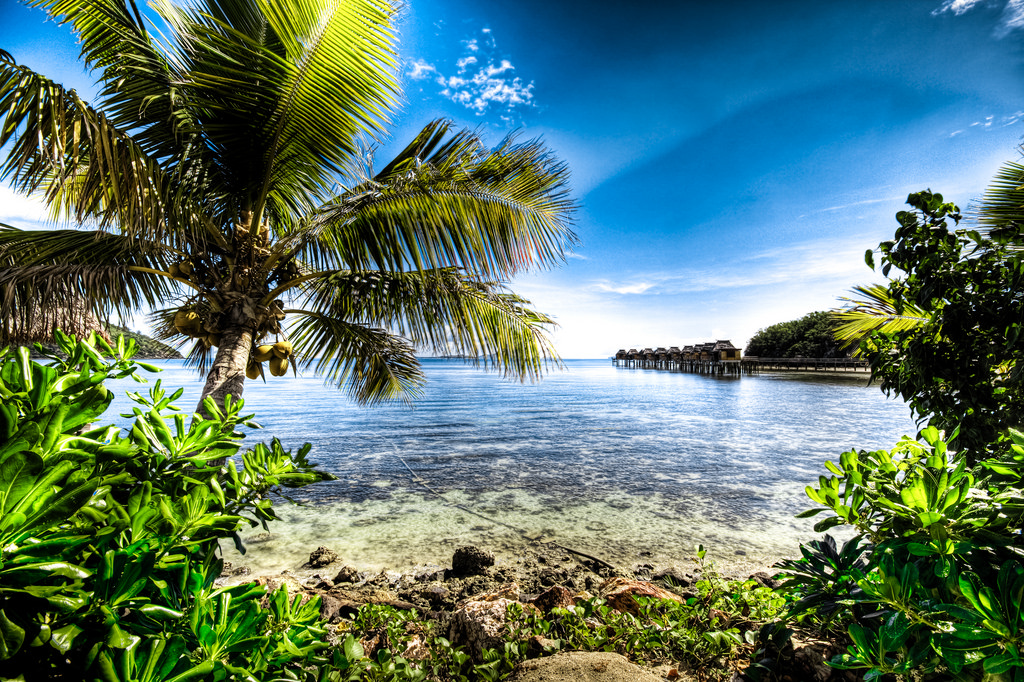I have an AwardCat client who is on a year-long round-the-world trip. He and his partner are visiting some really interesting destinations along the way (frankly, I’m jealous), and Fiji is one of those interesting destinations. Only one problem: it’s one of the toughest award tickets in the world to get, especially in a premium cabin. While I can work a lot of magic when booking awards, this one used pretty much every trick in the book. I’m writing it up while it’s still fresh and hoping that it helps other folks trying to get there.
The first problem in getting to Fiji is finding an airline that even flies there in the first place. It’s not a long list:
- Aircalin
- Air Kiribati
- Air New Zealand
- Fiji Airways
- Air Vanuatu
- Jetstar
- Korean Air
- Virgin Australia
The second problem is routing. Aircalin? It’s a great option if you’re based in New Caledonia, a French territory. Air Vanuatu? Perfect if you’re coming from Port Vila. You get the idea. Even some of the bigger airlines, such as Jetstar, don’t work unless you’re starting in Australia. This leaves only four real options if you’re coming from outside of the region: Virgin Australia, Korean Air, Fiji Airways and Air New Zealand.
Unfortunately, the third problem is availability. You can book Virgin Australia flights using Delta points, but good luck actually finding availability. The same is true on Air New Zealand, who more or less never makes seats (even in economy class) available on this route. Even if they made space available, finding award availability that lines up from the US to Australia or New Zealand and then onward to Fiji is a nearly impossible task.
This leaves Fiji Airways as the routing that most people have written about. You can book their flights using Alaska and American points. While I won’t say they have either good availability or a particularly good inflight product, it can be achievable with a little (ok, a lot of) flexibility. I won’t rehash all the other posts here; suffice it to say that it’s a good potential route if you’re sitting on lots of American and Alaska points, but otherwise not a good route.
And then there are my clients. Who were, naturally, not starting anywhere conventional, but in Osaka, Japan. This particular client earns Amex points at an astonishing rate; he has the Platinum Business card and his company books a ton of expensive airfare. This is a 5x bonus category with this particular card, meaning that for every $1 his company spends on airfare (and they spend over $10,000 a month on airfare) he receives 5 points. Naturally, given the amazing sweet spot, they have been working Membership Rewards pretty hard and have nearly a million points in the program. And they had very few points in anything else, after I encouraged them to spend all of their Marriott points on an air and hotel package to a Fiji hotel (me and my big mouth). Oh, and best of all, they were traveling on fixed dates (this strikes fear into any award booker’s heart) because they had already booked the hotel.
I knew I wouldn’t find anything on Air New Zealand but looked anyway. Nothing. Virgin Australia was a no-go. Fiji Airways was possible from Tokyo, but not on their dates, and they wouldn’t be in Tokyo. And then I checked Korean. Bingo. Economy class and first class availability on the dates I needed (well, one day early, but no way around that because there weren’t flights every day). And I knew I was going to have a difficult conversation with my clients, who really don’t like flying economy class if they can avoid it. I understand their perspective; really, I do. When you are swimming in points with no end in sight, you might as well burn them on seats up front. After all, my client has accumulated more points than many people could use in a lifetime, and all they do is devalue. If you’re in that position, why not treat yourself to the best?
Korean Air isn’t, unfortunately, the easiest program to use. You can only book tickets for yourself or for family members, which are strictly defined. And you can’t just name your family members like you can with other programs, such as Asia Miles. Instead, you have to complete a complicated family registration process which literally requires married couples to provide a marriage certificate. My clients, who I’ll call Lars and Jen, are on the road. They’re in a country that is known to have an officious government and are well-prepared for officialdom with plenty of documentation, but a billion bureaucrats are no match for Korean Air’s booking dragons. I knew that the only thing that was likely to work was Lars and Jen each booking their own ticket from their own Korean Air account, which fortunately both of them had.
The upside is that Korean Air will put award seats on hold while you figure out how to pay for them. I went ahead and put the seats on hold, and then we set about the task. The first step was seeing how many Chase points the couple had. These transfer directly to Korean Air. Fortunately both Lars and Jen are Chase cardholders, and they’re part of the same household. And Jen had enough Ultimate Rewards points to pay for her ticket. I went ahead and transferred over the points.
This left Lars. I moved Jen’s remaining Ultimate Rewards points into his Chase account, giving him a total of 42,000 points. This wasn’t going to be enough, but I transferred them over to his Korean account (remember, it had to be his because of Korean’s complicated rules). Lars also had 9,000 Starwood points, which can be transferred to Korean Air. This wasn’t enough on its own, but American Express transfers to Starwood. It’s a horrible conversion rate, at 3 Membership Rewards points per 1 Starwood point, but transfers do go through instantly and Starwood points do transfer to Korean Air. And fortunately, this is an avenue that is still available; the program ends in a couple of weeks on August 18th and it’s likely that the ability to use Membership Rewards points in the successor Marriott program will not exist (since Marriott is affiliated with Chase).
Starwood is also running a points sale, and this offers pretty good value, but I advised Lars to transfer his Amex points instead. Why? He is earning them at a furious pace, faster than he can really use them, and there would be no out of pocket cost to do this. He’s also earning points at more than a 3:1 rate already, which means that it’s not as big a “loss” on the conversion. And it’s not quite as bad as a 3:1 conversion, because for the transfer we were doing, Starwood would provide a 5,000 point bonus. It’s still not good at all, but not quite as bad as before. Fundamentally, though, he would not be trading real money for points. He’d be trading points (which he got for free) for different points (also obtained for free). You really have to be careful about valuing points as money because they aren’t; they are far less valuable than cash.
We transferred the remaining points needed from Amex to Starwood (they credited instantly), and then from Starwood to Korean. All of the points should show up in their respective accounts over the next week or so, along with the Alaska Airlines Mileage Plan points they selected with the Marriott Hotel and Air package they booked. If I’m lucky, the Fiji Airways ticket they want to Australia will still be there and I’ll grab it with Alaska points.
And that’s how Lars and Jen are going to Fiji. Simple, right? Just sign up for a few credit cards and you’ll be in paradise. The reality is a lot more complicated. With some planning and work, you might even get there on Korean Air.
Other blogs sell credit cards to accrue points – we help you use them! AwardCat can help you get to Fiji, or anywhere else in the world.



